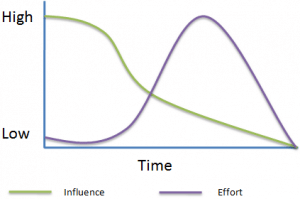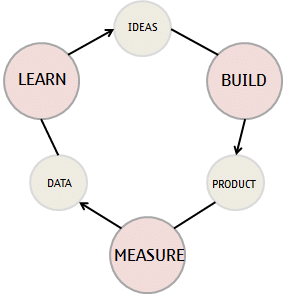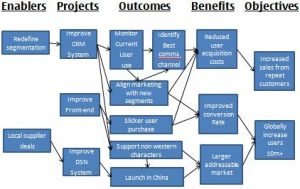In the previous post on Benefits Management we looked at defining exactly what benefits are. Now that we understand this it’s time to look at the Benefits Management Process:
Before we enter the Benefits Management Process loop we should have first determined the Benefits Management Strategy. This will define our approach to managing benefits and define such things as roles and responsibilities, and what systems or processes will be used to track benefits etc.
Stage 1: Identify Benefits
Assuming our Benefits Management Strategy is defined, the first step in the Benefits Management Process is to define what benefits we are after (Identify Benefits) and the actions needed to realise those benefits. The actions might be a change in process, the implementation of new systems or changes to existing software systems. Strangely, this first stage is often missed out in organisations, which is a mistake, and systems are implemented or bought based on the features they provide rather than the benefits they bring.
To make this very simple to understand let me give you an example from my personal life. I decided I wanted to cycle to work. The benefit of this is that I wouldn’t have to pay for parking and I would stay fit and healthy. Before I could cycle to work I needed to buy a bike (essentially, I needed a new system). However, once I got to the cycle store everything seemed so shiny and beautiful that I forgot I just needed a basic bike to get to and from work, and ended up buying a full suspension mountain bike and spending four times as much as I originally intended. In effect, I bought my new bike based on the features it possessed rather than the benefits it would bring. I have seen this mistake made time and time again in organisations.
Stage 2: Plan Benefits Realisation
Once we have identified the benefits we are after the next step is to put together our Benefits Realisation Plan. The Benefits Realisation Plan gives a full view onto all the benefits being delivered and takes the form of a schedule defining when each benefit will be realised. If there isn’t a huge number of benefits being delivered it is often practical to merge the Benefits Realisation Plan and Program Plan into a single plan.
There are a couple of other items the Benefits Realisation Plan should contain:
- Milestones in the schedule for when benefit reviews should be carried out.
- Information on any handover activities, that is, what needs to happen beyond just producing a deliverable to sustain the benefit realisation even after the program has ended?
Stage 3: Execute Benefits Plan
The third phase, Executing the Benefits Plan obviously starts when the program starts its execution but will typically outlive the program. Any benefits realised after the end of program execution should be monitored by the Program Management Office (PMO), but not managed by them as this should be handled by an operational part of the business. As the program is executed, delays, unforeseen circumstances, or even unforeseen additional capabilities may cause you to revisit the Benefits Realisation Plan (Stage 2).
Stage 4: Review / Evaluate
Stage 4 is about reviewing progress and achievements. These reviews should have been planned in Stage 2 (Benefits Realisation Plan). This stage is useful as it allows us to inform senior management and stakeholders of benefits realisation progress, and helps to identify if any further benefits are achievable. This stage may again cause us to revisit stage 2 and revise the Benefits Realisation Plan.
Stage 5: Identify Further Benefits
At any stage in the program we may identify further benefits (stage 5). These benefits need to be properly defined, planned, executed, and monitored.
I hope this provides you with a good overview of the Benefits Management Process. If you have any comments, would like to suggest an article topic, or would like to write a guest post on this blog then feel free to contact me.







